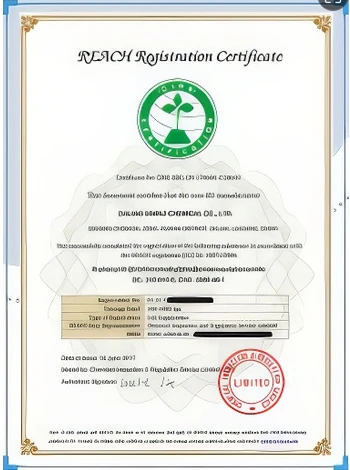



chlorine dioxide for drinking water
Chlorine Dioxide for Drinking Water A Comprehensive Overview
Chlorine dioxide (ClO2) is gaining attention as an effective disinfectant and water treatment agent, particularly in the field of drinking water purification. This chemical, known for its powerful antimicrobial properties, offers several advantages over traditional chlorine treatment methods. In this article, we will explore the benefits, application methods, and safety considerations of using chlorine dioxide in drinking water systems.
What is Chlorine Dioxide?
Chlorine dioxide is a yellow-green gas at room temperature and is soluble in water. Unlike chlorine, which is a strong oxidizer, chlorine dioxide is a selective oxidizer that targets specific microbial contaminants without producing a significant amount of harmful disinfection by-products (DBPs). It is commonly used to treat drinking water, as well as in wastewater treatment, food processing, and the paper industry.
Advantages of Chlorine Dioxide in Water Treatment
1. Effective Disinfection Chlorine dioxide is highly effective against a wide range of pathogens, including bacteria, viruses, and protozoa. It can effectively inactivate organisms resistant to chlorine, such as Cryptosporidium and Giardia, making it a valuable tool in ensuring safe drinking water.
2. Reduced Formation of Disinfection By-products One of the major concerns with chlorine disinfection is the formation of harmful by-products, such as trihalomethanes (THMs). Chlorine dioxide reduces the formation of these compounds, making it a safer alternative for drinking water treatment.
3. Odor and Taste Neutrality Chlorine dioxide has a less intrusive odor and taste compared to chlorine, which can lead to greater public acceptance of treated water. Its use can enhance the palatability of drinking water, encouraging higher consumption levels.
4. Broad pH Applicability Chlorine dioxide operates effectively across a broader pH range compared to chlorine, making it versatile in various water quality conditions. This adaptability allows for its use in diverse geographical and environmental settings.
5. Residual Effect Although chlorine dioxide does not provide long-lasting residual disinfection like chlorine, it can still offer sufficient residual levels in water distribution systems to control microbial growth and provide safe water to consumers.
chlorine dioxide for drinking water

Application of Chlorine Dioxide
Chlorine dioxide can be applied in several methods for drinking water treatment
1. Pre-chlorination Implementing chlorine dioxide before the coagulation phase can help improve the effectiveness of subsequent filtration and removal processes.
2. Post-chlorination In this method, chlorine dioxide is added after the traditional chlorine treatment to control residuals and enhance disinfection.
3. Continuous Disinfection In some systems, chlorine dioxide is continuously dosed into the water supply, providing ongoing disinfection throughout the distribution system, which is crucial for maintaining water quality over time.
Safety Considerations
While chlorine dioxide is generally safe when used within recommended concentrations, it is essential to adhere to regulatory guidelines. The U.S. Environmental Protection Agency (EPA) has set guidelines for the maximum residual levels of chlorine dioxide in drinking water to ensure public health safety. Furthermore, training and safety protocols are necessary for personnel handling chlorine dioxide due to its potential irritative properties.
Conclusion
Chlorine dioxide presents a compelling solution for water utilities seeking effective and safer methods of drinking water disinfection. Its ability to inactivate a wide spectrum of pathogens while minimizing harmful by-product formation makes it a valuable addition to the arsenal of water treatment technologies. As concerns surrounding water quality continue to grow, the adoption of chlorine dioxide could play a significant role in delivering safe and palatable drinking water to communities around the globe. Public education on its benefits and safety is crucial to fostering acceptance and trust in this innovative water treatment option.
-
Why Sodium Persulfate Is Everywhere NowNewsJul.07,2025
-
Why Polyacrylamide Is in High DemandNewsJul.07,2025
-
Understanding Paint Chemicals and Their ApplicationsNewsJul.07,2025
-
Smart Use Of Mining ChemicalsNewsJul.07,2025
-
Practical Uses of Potassium MonopersulfateNewsJul.07,2025
-
Agrochemicals In Real FarmingNewsJul.07,2025
-
Sodium Chlorite Hot UsesNewsJul.01,2025










